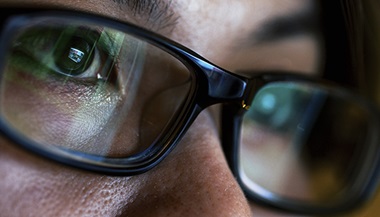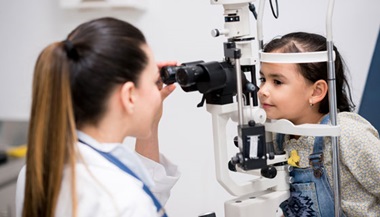How to Safely View the Total Solar Eclipse 2024
Reviewed By:
Reviewed By:
On Monday, April 8, 2024, a total solar eclipse will make its way across the continental United States for the first time in six years. According to NASA, the total eclipse — when the moon will appear to completely cover the sun — will be visible across a path about 115 miles wide stretching from Texas (beginning around 12:23 p.m. CDT) to Maine (ending around 4:40 p.m. EDT). Outside of that path, Americans will see a partial eclipse — the moon will only cover a part of the sun.
While there is consensus that you should never view a partial eclipse with the naked eye, some organizations have stated that it is safe to watch an eclipse without eye protection during totality — of course, that would be only in locales where the eclipse is total, not partial.
But Johns Hopkins experts warn that this may be dangerous. That’s because totality of the eclipse is short-lived (lasting about one to three minutes based on geographic location). As the moon continues to move across the sun and totality ends, bright sunlight might suddenly appear, and even a few seconds of viewing the sun in this manner can temporarily or permanently damage the eye. Johns Hopkins experts remind viewers that in most places, the eclipse will only be partial, not total.
Protect Your Eyes While Viewing the Solar Eclipse
Here are some general tips to consider when preparing to view an eclipse. For in-depth details, including how the sun’s rays can damage your eyes, and what optical devices are considered safe and unsafe to view the eclipse, read “Safely Viewing Solar Eclipses ” — from Johns Hopkins retina specialists Fernando Arevalo, M.D., research fellow Jun Kong, M.D., and Neil Bressler, M.D., published in the Journal of the American Medical Association.
- Never view an eclipse with the naked eye or when using optical devices that do not properly filter the sun’s rays.
- Understand the risks of damage to the eye, whether viewing a partial or a total eclipse.
- Carefully inspect approved optical devices, and do not use them if you find scratches, defects or damage.
- Make sure you know how to view the eclipse if you are using a pinhole projector.
- If you normally wear glasses, keep them on while using the optical device.
- Always supervise children using solar filters.
- Seek immediate professional help if you suspect any damage to your eyes from viewing the eclipse.
Millions of Americans will experience the total eclipse along its cross-country path. Whether you look up from the path of totality or from anywhere in the United States where a partial eclipse occurs, with proper planning and the right protections in place, you can safely experience this relatively rare display of cosmic glory.
Sign Up for Our Free Newsletter

One of the best things you can do to protect and improve your health is to stay informed. Your Health is a FREE e-newsletter that serves as your smart, simple connection to the world-class expertise of Johns Hopkins.








